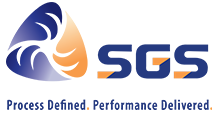Optical Simulation Engineer
Duration: 12 Months.
Summary:
- The main function of an optical Engineer is to develop new concepts and technologies for next generation Near-Eye Displays (NEDs), projectors, cameras and sensors including integrated optics, structured light, depth sensing, polarization optics, and optical system design.
Job Responsibilities:
- Work with a small team of optical scientists in developing imaging systems for AR and VR applications.
- Model and prototype critical technologies to drive system performance and validation.
- Research and develop emerging concepts in imaging systems and optical systems in support of NEDs.
- Support the evaluation and characterization of optical components and system integrations.
- Collaborate with the larger research team to explore concepts and drive optical system development to create compelling experiences.
- Drive supplier choice, interaction, and management to deliver prototypes in support of concept demonstrations.
- Establish specifications for display and imaging systems to ensure a successful product.
Must-Have Skills:
- Very strong in the optical simulation and designing tools, and methods such as FRED, ASAP, LightTools, or ZEMAX, optical design in the characteristics, camera NIR illumination.
- Experience with one or more of the following optics technologies: illumination, radiometry/photometry, stray light analysis, physical optics, or imaging.
- Familiarity with optical components/technologies illumination, radiometry/photometry, stray light analysis, physical optics, or imaging.
Nice-to-have Skills:
- Eye tracking experience would be ideal.
- AI or ML algorithm and hardware systems.
Skills:
- Experience in applied research and/or product development of optics or photonic systems.
- Experience with one or more of the following optics technologies: illumination, radiometry/photometry, stray light analysis, physical optics, or imaging.
- Experience with laboratory work setting up optical systems and experience with methods and tools for fabrication of optics (molded, polished, diamond turned) as well as microstructures.
- Designing optical tools and methods such as FRED, ASAP, LightTools, or ZEMAX.
- Ability to work with minimal direction and managing a project independently from start to finish.
- Working, communicating, and collaborating in a cross-functional team environment.
- Experience in radiometric calibration, signal-to-noise measurement, and modeling of imaging systems.
- Experience defining system performance and component specifications.
- Experience measuring and modeling optical scatter.
Education/Experience:
- Advanced degree in the field of Optical Sciences, Physics, Electrical Engineering, or a similar field or equivalent experience.

